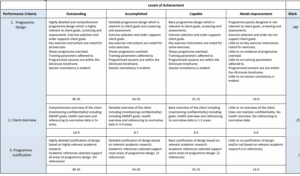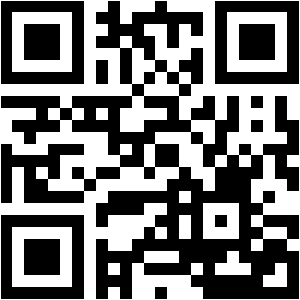| University | Eastern Institute Of Technology (EIT) |
| Subject | BSES5.007 Exercise Assessment and Programming |
Assessment Guidelines
Course Name: BSES5.007 Exercise Assessment and Programming
Assessment title: Individual Exercise Programme
Due date Weighting: 50%
Learning outcomes
- Execute a client screening and assessment.
- Design an appropriate exercise programme to meet the needs of an individual.
Guidelines
You will develop a 4-week individualised exercise programme based on a client’s screening, health assessment and physical fitness assessment. You will need to justify your programme design using academic research.
All documents required for this assessment are available on EIT Online.
Step 1
Read the assessment guidelines and marking rubric and highlight any questions you have for your tutor.
Step 2
You will be allocated a client to work with for this assessment and times will be scheduled for you to complete pre-screen, health assessments (Assessment 1) and appropriate physical fitness assessments using the forms provided (to be conducted the day after the interview and health screening).
Using data collected from your screening assessment; you will work with the same client to complete appropriate physical fitness assessments.
You will need to consider the Code of Ethical Practice and the Privacy Act 2020 when handling and storing personal information.
Stuck! Do not Know Assessment Answers?
Hire NZ Native Experts 24/7.
Step 3
Using ALL information gathered from assessment 1 and physical fitness assessments, design a 4-week individual exercise programme that shows progression. The programme should consider the following:
- Client goals
- Consistency of structure e.g. warm up, exercises, cool down
- Exercise selection, order and parameters
- Principles of exercise training
- Health and safety
- Purpose of exercises that links to the client goals
- Key instructional points
- Appropriate timeframes including session length (45minutes) and programmed sessions, finishing with a retest of health and fitness assessments
- Feedback methods
- Personal reflection
There is no word count for the exercise programme section
Step 4
Provide a client overview and justification for your exercise programme design using appropriate academic references.
Consider the following questions:
- How does your programme design link to the client goals?
- How have you applied the principles of training?
- Why did you select these exercises and parameters?
Client overview should include:
- Client SMART goals and preferences
- Previous and current injuries (if applicable)
- Fitness test results compared to normative data
- Any other information deemed relevant such as lifestyle commitments
Ensure you report on data obtained from assessment 1 and the interpretation of normative data for:
- Body Mass Index, Waist to Hip Ratio, Resting Heart Rate, Body Fat %, Blood Pressure
These aspects will influence the justification of your individualised programme
Word Count <1500
Step 5
Utilise learning services, academic resources and other support services to ensure references are correctly formatted and applicable to the submission.
Step 6
Check your work against the marking rubric to ensure you have completed all areas of the assessment. You can then make any final changes before you submit your assessment for marking.
Step 7
Check your similarity report through Turnitin, once cleared, submit the final copy.
Step 8
Your tutor will provide you with assessment feedback, read the feedback provided and identify gaps in your knowledge and formulate future learning goals.
Academic Requirements
- Include a minimum of 2 references using the current APA formatting.
- Font: Calibri or Times New Roman size 12, 1.5 line spacing
- Word count:
- Client Overview and Justification <1500 words
- There is no word count for the exercise programme section
- Student ID number and assessment name to be included in the header
Buy Custom Assignment & Homework Solutions
Pay to NZ Native Writers | Cheap Cost & Plag Free
Available support
The following support services are available to you to assist while completing the assessment:
- Academic Learning Services
- Disability and Wellbeing Support
- Māori and Pasifika Student Support
For relevant, up-to-date contact information, please visit https://www.eit.ac.nz/students/
Complete the BSES5.007 Individual Exercise Programme report with the help of AI-free assignment help NZ. Expert professionals are available for all types of assignments to provide you with plagiarism-free and excellent content. Just type “DO MY ASSIGNMENT” and leave the stress of the report to the experts. Contact us today and get your best report!
- LAWS390 Business Law for Māori Organisations Essay | VUW New Zealand
- Nursing Assignment 3 : Factors that Impact Registered Nurses’ Ability to Influence National Government Health Policy
- The Management and Behaviour or Pregnant Sows on Pasture Assignment 1 | Massey University (MU)
- HAS 962 Occupational Hygiene: Measurement Assessment 4 AIOH Technical Report | UOW
- IT00143 Install & Optimize Software Applications Assignment | Pacific Polytech
- Digital Tourism and Hospitality Assignment Report | Auckland University of Technology
- HEAL840 Critical Enquiry for Evidence Based Practice Additional Assessment Opportunity (AAO) Semester 1 2025
- RES903 Research Dissertation Assessment One | Nelson Marlborough Institute of Technology (NMIT)
- 71338 Managing Change Assessment 3 Strategy and Implementation Report | Open Polytechnic
- BSRV4601 Fundamentals Real Estate Assignment 1: Eligibility and licensing | Open Polytechnic (OP)



